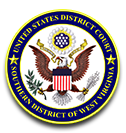Opinion
Pending before the court is plaintiffs’ motion to dismiss its Magnusson-Moss Warranty Act Claims (doc. 5). For the reasons given below, the motion is hereby GRANTED, and, accordingly, the case is REMANDED to the Circuit Court of Wyoming County, West Virginia.
